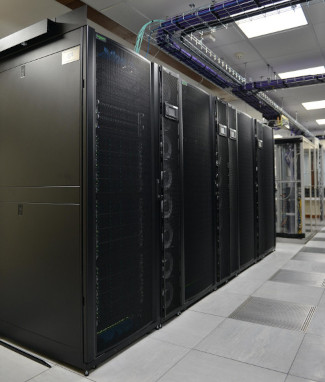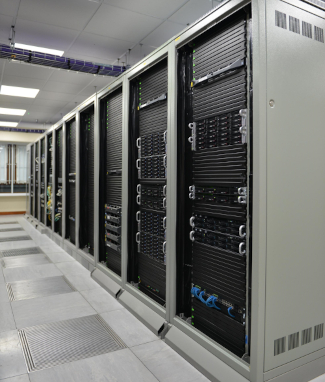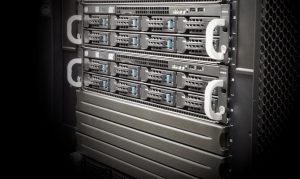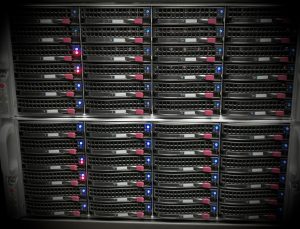Difference between revisions of "Quickstart/What Is Viper"
m (→Vipers' hardware) |
m |
||
| Line 3: | Line 3: | ||
==What is a supercomputer?== | ==What is a supercomputer?== | ||
| − | [[ File:Vipero1cropped.jpg|frame|These 4 racks contain 180x compute nodes, 4x high memory nodes, and | + | [[ File:Vipero1cropped.jpg|frame|These 4 racks contain 180x compute nodes, 4x high memory nodes, and 5x accelerator nodes which form part of Viper.]][[ File:Storage01cropped.jpg|frame|These racks contain the storage which is 0.5 Petabyte and the controller nodes, two login nodes, and two visualisation nodes.]] |
Supercomputers are computers with a high level of computing performance compared to a general-purpose computer. A supercomputer like Viper has a lot of elements of a desktop computer — processors, memory, disk, operating system — just more of them. | Supercomputers are computers with a high level of computing performance compared to a general-purpose computer. A supercomputer like Viper has a lot of elements of a desktop computer — processors, memory, disk, operating system — just more of them. | ||
| Line 17: | Line 17: | ||
==Who can use Viper?== | ==Who can use Viper?== | ||
| − | Viper is available to all research staff and postgraduates at the University of Hull for free | + | Viper is available to all research staff and postgraduates at the University of Hull for free and provides an environment that will stimulate innovation and support world-class [https://hpc.wordpress.hull.ac.uk/research-outputs/ research]. |
Viper is currently used for: | Viper is currently used for: | ||
| Line 52: | Line 52: | ||
|- | |- | ||
|[[File: Storagenodes.jpg]] | |[[File: Storagenodes.jpg]] | ||
| − | |'''Storage Nodes'''<br>These are servers in their own right which allow access to the actual storage arrays (hard disks), Viper accesses | + | |'''Storage Nodes'''<br>These are servers in their own right which allow access to the actual storage arrays (hard disks), Viper accesses its disk storage via these nodes. |
|- | |- | ||
|[[File: Storagearray.jpg]] | |[[File: Storagearray.jpg]] | ||
Revision as of 14:57, 9 November 2022
Contents
What is Viper?
Viper is the University of Hull's supercomputer and is located on-site with its own dedicated team to administrate it and develop applications upon it.
What is a supercomputer?
Supercomputers are computers with a high level of computing performance compared to a general-purpose computer. A supercomputer like Viper has a lot of elements of a desktop computer — processors, memory, disk, operating system — just more of them.
Why do we need a supercomputer?
The point of having a high-performance computer is so that the individual nodes can work together to solve a problem larger than any one computer can easily solve.
Supercomputers generally aim for the maximum in capability computing rather than capacity computing. Capability computing is typically thought of as using the maximum computing power to solve a single large problem in the shortest amount of time. Often a capability system is able to solve a problem of a size or complexity that no other computer can, e.g., a very complex weather simulation application.
How does Viper work?
High-performance computers achieve a high level of performance by allowing the user to split a large job into smaller computation tasks which then run in parallel, or by running a single task with many different scenarios on the data across parallel processing units.
Like just about all other supercomputers Viper runs on Linux, which is similar to UNIX in many ways and has a wide body of software to support it.
Who can use Viper?
Viper is available to all research staff and postgraduates at the University of Hull for free and provides an environment that will stimulate innovation and support world-class research.
Viper is currently used for:
- Astrophysics
- BioEngineering
- Business School
- Chemistry
- Computer Science
- Computation Linguistics
- Geography
- And many more
Viper's hardware











